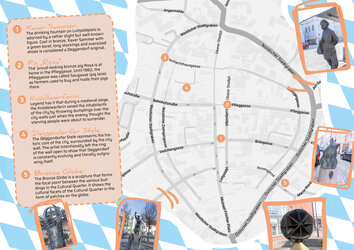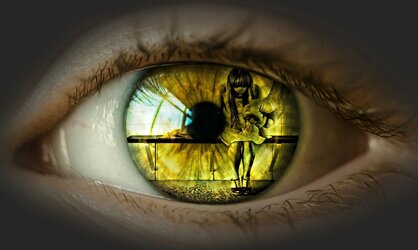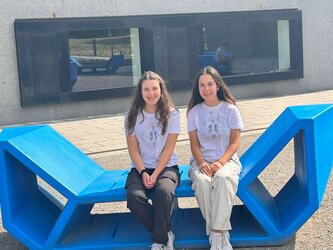
When we think of methods for conducting our academic research, it is often self-report (e.g. interview, survey) that comes first to our minds. But how about going beyond questionnaires and using some new and interesting techniques in your next academic work? The DigiHealth & Smart Tourism Lab at the European Campus Rottal-Inn has some tracking technologies that can boost your research ideas and help you produce meaningful results.
One of these techniques is eye tracking. It allows you to capture and measure visual attention (eye movement) in real-time, adding relevant metrics to your study. The eye tracking device exists in a screen-based (desktop) and glasses (mobile), giving you the possibility to conduct your studies either in the lab or on-site.
And what data can you get from eye tracking? Well, results can range from fixation and gaze points to pupil dilation and frequency of blinks. In short, it offers several metrics that can help you understand visual attention, an essential input in non-verbal communication. With eye tracking, you can track where people look, when they look, how long they look, where they look first and know which stimuli get more attention. Some advanced metrics, like pupil dilation, ocular vergence, distance to the screen and blinks, can give you information about emotional arousal, focus, concentration, and cognitive workload. As you can see, it has the potential to really improve your investigation.
With all of these metrics, you can build an eye movement map that helps you understand how your project, design, or experiment catches users' attention. For example, the most common are heat maps, which shows those areas that got more attention. Based on fixation points, you can build a fixation sequence, which is suitable to understand visual patterns. In other words, how people see your project (e.g. app, website, prototype, packaging).
![]()
You can get many other data from eye tracking, for example, areas that receive more interest, time to the first fixation, number, duration, and dispersion of fixations. Even the x and y coordinates of the fixation you can obtain. And most importantly, all these data can be exported in a file format supported in Excel. So, you can analyse it using Excel or export it to programs as PSPP or SPSS and perform some more advanced statistical analysis.
That said, I truly believe you can take your project to the next level by adding this new technology to your research design. Maybe you have an excellent research idea and are trying to figure out which method you will use to make it possible. So, I hope these few tips about eye tracking can get you some helpful insights. If you want to use this technology, you have full support from the lab engineer, which makes things even more accessible.
In conclusion, if understanding visual attention can add accuracy and reliability to your project, do not think twice: use eye tracking. You can also combine eye movement with a survey, interview, or some observation methods. You can also combine it with other physiological methods, such as Galvanic skin responses and facial expression analysis. But this is a topic for another post.
Celso Caciano Brito
Celso Brito is a Brazilian master student of International Tourism Development at Technische Hochschule Deggendorf (THD-ECRI). Experienced travel manager and tour leader, he has visited many countries around the world, mainly in Europe, South and North America. He loves literature, art, music, wine, gastronomy and is always ready for a trekking adventure.









